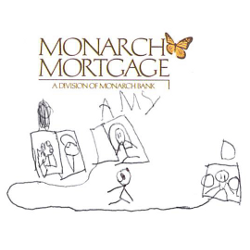Amy flitted into my office like only a six year old girl can and handed me a piece of paper. “Daddy, come and find me!” she said, and with a giggle she was gone. As it turns out, I’d been given a map. A map that if properly interpreted would lead me to where my Amy was hiding and waiting to be found. After a few wrong turns and dead ends in my attempt to interpret and follow the map, Amy squealed with delight as I opened the closet in which she was hiding. Since I’d had difficulty recognizing certain things on the map, I asked her what they were. After she explained what each item was on the map, it all seemed so obvious. However up until then, it was a mystery. Just as a six year old wants to be “found” by Daddy, we all want to be found by our customers. Let’s look at three keys for increasing our find-ability with our ideal customers.

Amy’s map to help me find her
Use your customer’s language
Have you ever traveled internationally and tried talking with someone who didn’t speak your language? At best this is quite challenging. Now imagine trying to communicate with would-be customers without speaking their language. Not a very pretty picture, but you’ve likely seen examples of this. This is essentially what happens when insider industry jargon is used with customers. The message has to be tailored to the audience, not only with the subject matter itself, but also with the choice of vocabulary. Using your customer’s language is about ensuring that your website navigation labels, page titles, and page content use the key word phrases that your customers intuitively understand and are using. When a person visits a webpage for the first time, the question that they subconsciously ask themselves is – “is this the right page?” Using the wording and phrasing that your customers use is essential to helping them recognize that yes, they are on the right page.
Think multiple entry ways
We often tend to think of our website in hierarchical form. We think in terms of entering our website by going to the homepage first. However, most of the people who visit your website don’t start on your homepage. In fact, many never even see your homepage. You can see this for yourself by taking a look at the top landing pages for your website in Google Analytics. Your homepage will be on the list, but so will a bunch of other pages. When you understand that most people who come to your website don’t come directly to your homepage, your website navigation takes on a whole new level of importance. Suddenly our nice, easy-to-understand hierarchical model for navigation on our website seems woefully inadequate. This doesn’t mean that hierarchical navigation is bad, just that we need to provide alternatives so that people don’t have to go from their landing page on our site to our homepage in order to get to what they are looking for. The objective is that the people coming to the website will have a great user experience, regardless of which page they enter the site from.
Think multiple paths to the same goal
Back in the early days of the Internet, the World’s largest knife store, Smokey Mountain Knife Works, launched its first website. Their first attempt at on-line commerce became a classic example of bad user experience (UX). You see, their website was a digitized version of their extensive catalog. Each page of their catalog was represented as its own webpage. From each page on their website, you had one of three choices.
- Go back to the previous page
- Buy something on this page
- Go forward to the next page
What was on the next page? There was no way to know until you got there. From the homepage you could only go directly to page two of the website. You couldn’t go directly to any other page on their website / online catalog.
This was a classic example of a website designed with only one navigational path in mind. One aspect of having a customer friendly website is to offer multiple ways of getting around. We all think about things slightly differently and our shopping habits aren’t all exactly the same. Having multiple ways to make a purchase, or to find the product / information on your website is just good business, because it is about making it easy for your customers to do what they want to do and find what they are looking for on your site.
Just like Amy, we all want to be found by someone. By speaking our customer’s language and making sure that our site is easy to navigate regardless of which page they enter our site from, we make it easy for our ideal customers to find us and do business with us. Take some time to assess your find-ability with your ideal customers – it is one of the most powerful things you can do to increase the effectiveness of your website.






















